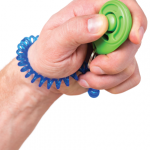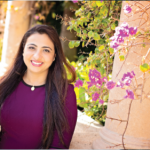Although they serve as the scaffolding on which facts and concepts can be organized and reinforced, most medical school lectures proceed without even the briefest example involving patients. There is no glue in the message, so the story may not stick for long.
Attention to stickiness would make medical school lectures more engaging and memorable, but they would still be lectures. Drs. Prober and Heath offer a solution for this dilemma, called the flipped classroom. In this model, students first absorb an instructor’s lecture in a digital format as homework, freeing up class time for a focus on applications, including emotion-provoking simulation exercises. For example, we are starting to incorporate case-based studies of patients with rheumatoid arthritis (RA) or systemic lupus erythematosus (SLE) as a way to capture our audience’s attention. This approach is preferred to the old style of teaching where students were given handouts on the basic science of either RA or SLE, but without any clinical anchors. The majority of students chose not to bother showing up to class. Instead, they would wait until a few nights before the exam, view the lecture on video, memorize some key concepts, regurgitate them on the exam, and then shut their minds to rheumatology.
In a similar vein, the Stanford educators cite the example of the core biochemistry course that was redesigned following a similar model. Rather than using a standard, lecture-based format, the instructors provided short online presentations. Class time was used for interactive discussions of clinical vignettes highlighting the biochemical bases of various diseases. The proportion of student course reviews that were positive increased substantially from the previous year and the percentage of students who actually attended class more than doubled from 30% to 80%, even though attendance was optional. Sticky molecules, indeed!
A teaching experiment recently conducted at the University of British Columbia in Vancouver, Canada, had one group of undergraduate students taught by a Nobel laureate physicist using the traditional lecture format, while the other group employed a flipped-classroom approach that was led by several teaching assistants.6 The researchers found increased student attendance, higher engagement, and more than twice the learning in the latter group. The moral of this story must be: Keep your Nobel laureates in the lab and out of the classroom.
How One Kid’s Math Problems Revolutionized Teaching
In 2004, by all appearances, Sal Khan was a highly successful guy. Twenty-seven years old, a graduate of Harvard and the Massachusetts Institute of Technology, both in Boston, he was working as a hedge fund manager when a young cousin of his in New Orleans, Nadia, was having trouble in math class converting kilograms to pounds.7 He agreed to tutor her from a distance. With long-distance instruction using Yahoo Doodle software as a shared notepad and a telephone, Nadia thrived—so much so that Khan started working with her brothers, Ali and Arman. Word spread to other relatives and friends. Khan wrote JavaScript problem generators to create a much-needed supply of practice exercises. But between their soccer practices, his job, and multiple time zones, scheduling became impossible. “I started to record videos on YouTube for them to watch at their own pace,” Khan recalls. Other users began tuning in, and the blueprint for the Khan Academy was created.


